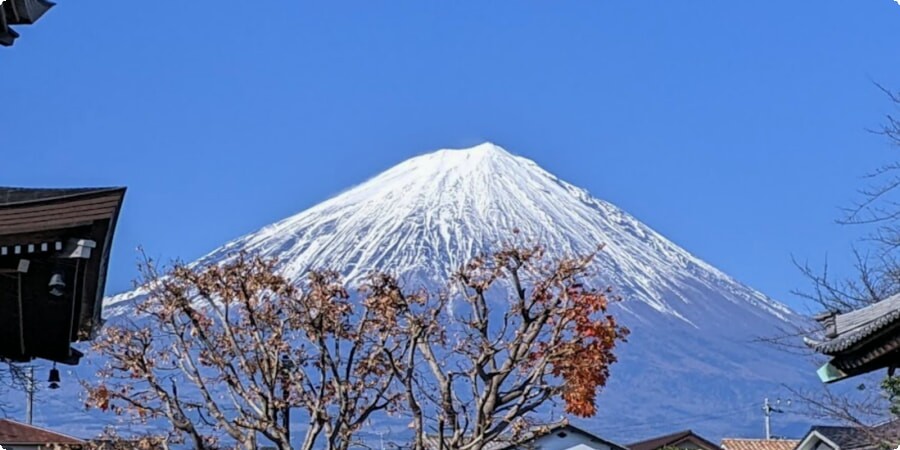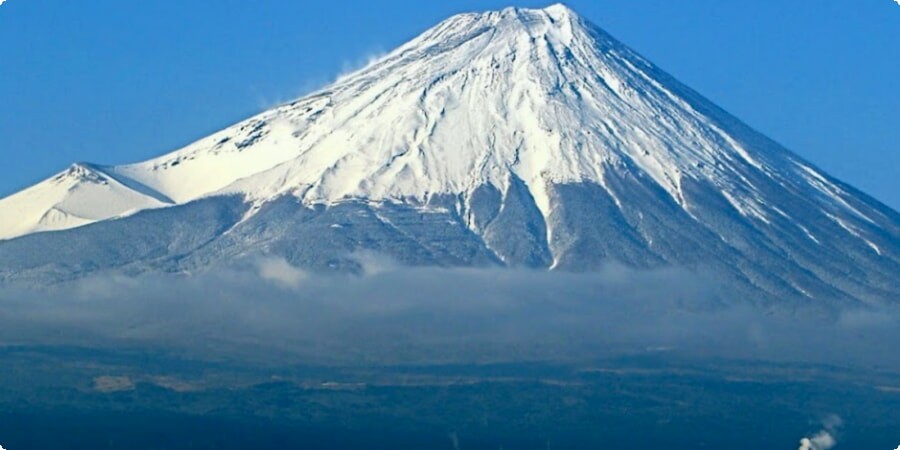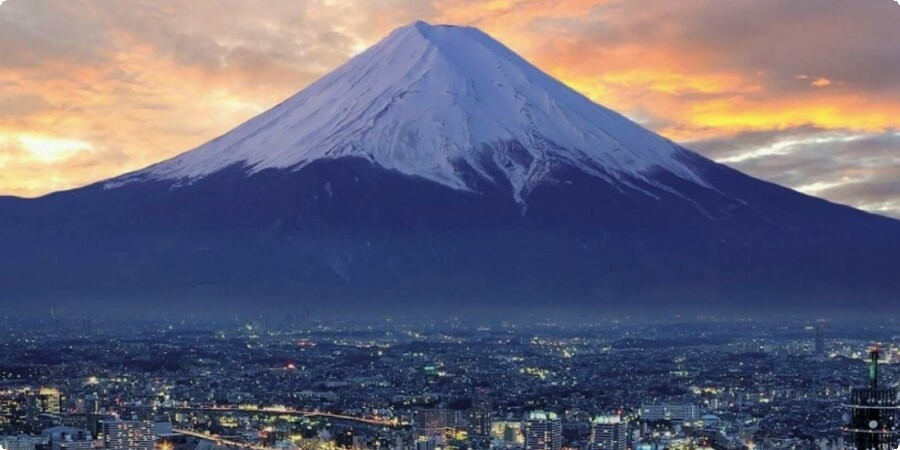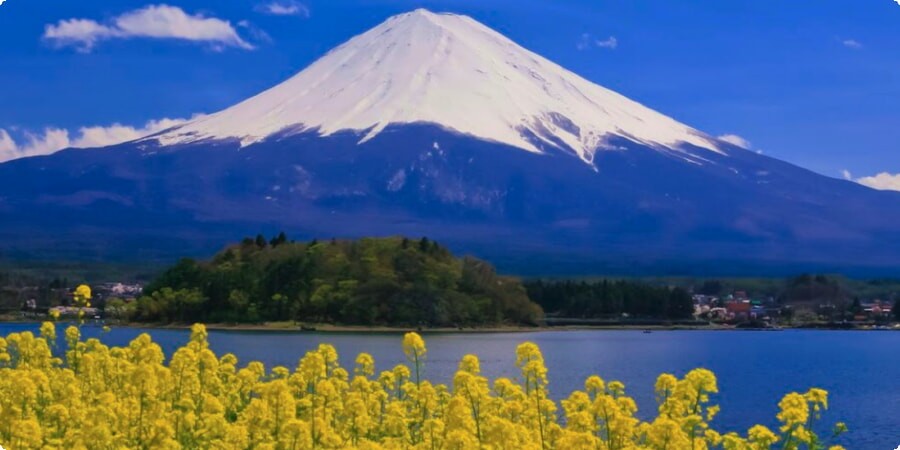Planning Your Pilgrimage: Tips for Visiting Mount Fuji
Mount Fuji, Japan's iconic symbol and highest peak, stands majestically at 3,776 meters (12,389 feet) above sea level. Revered for its beauty and spiritual significance, Mount Fuji attracts thousands of pilgrims, hikers, and nature enthusiasts from around the world each year. Located about 100 kilometers southwest of Tokyo, the mountain is a UNESCO World Heritage Site and a cherished symbol of Japan's natural heritage.
Understanding the Significance: The Spiritual and Cultural Importance of Mount Fuji
Mount Fuji holds profound spiritual significance in Japanese culture, often regarded as a sacred site and a symbol of endurance, perseverance, and enlightenment. Known as Fuji-san in Japanese, the mountain has been revered for centuries by pilgrims who undertake the arduous journey to its summit, seeking spiritual awakening and enlightenment along the way. Mount Fuji is also deeply ingrained in Japanese art, literature, and folklore, serving as a source of inspiration for poets, artists, and writers throughout history.
Choosing the Right Time: Seasonal Considerations for Visiting Mount Fuji
The best time to visit Mount Fuji largely depends on the purpose of your trip and the activities you wish to undertake. Here's a brief overview of the seasonal considerations for visiting Mount Fuji:
-
Summer (July to September): This is the official climbing season for Mount Fuji when the mountain is typically free of snow and ice. The weather is relatively mild, making it ideal for hiking and summiting the peak. However, summer is also the busiest time of year, with large crowds of climbers ascending the mountain daily. It's essential to book accommodation and transportation well in advance if you plan to visit during this time.
-
Autumn (October to November): Autumn offers stunning views of Mount Fuji surrounded by vibrant fall foliage, making it a popular time for photography enthusiasts. The weather is cooler than summer, and the crowds are smaller, making it a more peaceful time to visit. However, it's essential to check the weather forecast and be prepared for sudden changes in conditions, especially as winter approaches.
-
Spring (April to June): Spring brings cherry blossoms to the foothills of Mount Fuji, creating a picturesque backdrop for visitors. The weather is generally mild, and the trails are less crowded than in summer. However, snow and ice may still be present at higher elevations, so it's crucial to check trail conditions and come prepared with appropriate gear.
When planning your pilgrimage to Mount Fuji, consider the season that best aligns with your preferences and interests. Regardless of when you visit, Mount Fuji promises an unforgettable experience filled with natural beauty, cultural significance, and spiritual inspiration.

If you're planning to explore Mount Fuji and its surrounding areas, renting a car in Tokyo can provide flexibility and convenience during your journey. You can easily book a car through Car Scanner to embark on your Mount Fuji adventure with ease.
Selecting the Ideal Route: Exploring the Various Trails to Mount Fuji's Summit
Mount Fuji offers several routes to its summit, each varying in difficulty, length, and scenery. Here are some of the most popular trails:
-
Yoshida Trail: The most frequented route, starting from the fifth station on the mountain's northeastern side. It's relatively well-maintained and offers mountain huts for overnight stays.
-
Subashiri Trail: Beginning from the Subashiri fifth station on the southeastern side of Mount Fuji, this route is known for its scenic beauty and less crowded trails compared to Yoshida.
-
Gotemba Trail: Starting from the Gotemba fifth station on the southwestern side, this trail is the longest and most challenging, but it offers stunning views and fewer crowds.
-
Fujinomiya Trail: Beginning from the Fujinomiya fifth station on the southwestern side, this trail is one of the shortest routes to the summit and is known for its steep ascent.
Choosing the right trail depends on your fitness level, hiking experience, and preferences for crowds and scenery.

Preparing for the Climb: Essential Gear and Safety Precautions
Climbing Mount Fuji requires proper preparation and gear to ensure a safe and enjoyable experience. Here are some essential items to pack:
-
Sturdy Hiking Boots: Comfortable and supportive footwear is essential for navigating the rocky terrain and steep inclines.
-
Warm Clothing: Even in summer, temperatures can drop drastically at higher elevations, so bring layers, including a waterproof jacket and pants.
-
Headlamp: If you plan to summit for sunrise, a headlamp is crucial for navigating the trails in the dark.
-
Food and Water: Bring plenty of snacks and water to stay hydrated and energized throughout the climb. There are mountain huts along the trails where you can purchase food and drinks, but they can be expensive.
-
First Aid Kit: Carry a basic first aid kit with essentials like bandages, blister pads, pain relievers, and any necessary medications.
Safety precautions include checking the weather forecast, acclimating to the altitude, and knowing your limits. If you experience altitude sickness or severe weather conditions, it's essential to descend immediately.

Accommodation Options: Where to Stay Near Mount Fuji
There are various accommodation options available near Mount Fuji, catering to different preferences and budgets. Here are some popular choices:
-
Mountain Huts: Located along the trails, mountain huts offer basic accommodation and meals for climbers. Reservations are recommended, especially during the peak climbing season.
-
Hotels and Ryokans: In nearby towns like Fujinomiya, Kawaguchiko, and Fujiyoshida, you'll find a range of hotels and traditional ryokans offering comfortable lodging and amenities.
-
Camping: For a more adventurous experience, camping is permitted at designated campsites around Mount Fuji. Be sure to check the rules and regulations for camping in the area.
Booking a car in Japan can provide flexibility and convenience for exploring Mount Fuji and its surrounding areas. You can easily rent a car through Car Scanner to enhance your Mount Fuji pilgrimage with ease and comfort.
Navigating Local Customs: Etiquette and Respectful Behavior While Visiting Mount Fuji
When visiting Mount Fuji, it's essential to be mindful of local customs and etiquette to show respect for the mountain and its cultural significance. Here are some tips to keep in mind:
-
Leave No Trace: Practice "leave no trace" principles by carrying out all trash and waste from the mountain. Respect the natural environment and leave it as you found it.
-
Respect Sacred Sites: Mount Fuji is considered a sacred place in Japanese culture. Be respectful when visiting shrines, temples, and other religious sites along the trails.
-
Follow Trail Etiquette: Stay on designated trails, yield to uphill hikers, and be mindful of others while hiking. Avoid loud noises and disturbances to maintain a serene atmosphere.
-
Observe Sunrise Silently: If you plan to watch the sunrise from the summit, observe in silence as it's considered a spiritual moment for many climbers.
Exploring Nearby Attractions: Side Trips and Points of Interest Around Mount Fuji
While Mount Fuji is undoubtedly the main attraction, there are several other points of interest worth exploring in the surrounding area:

-
Fuji Five Lakes: Located at the northern base of Mount Fuji, the Fuji Five Lakes offer stunning views of the mountain reflected in the pristine waters of Lake Kawaguchi, Lake Yamanaka, Lake Sai, Lake Shoji, and Lake Motosu.
-
Fuji-Q Highland: An amusement park located near the base of Mount Fuji, offering thrilling roller coasters, rides, and attractions for visitors of all ages.
-
Fuji Shibazakura Festival: Held annually from mid-April to late May, this festival showcases vast fields of shibazakura (pink moss phlox) in bloom against the backdrop of Mount Fuji.
-
Oshino Hakkai: A picturesque village known for its crystal-clear spring water and traditional thatched-roof houses, offering a glimpse into rural life in Japan.
Sustainable Tourism Practices: Responsible Travel Tips for Protecting Mount Fuji's Environment
As tourism to Mount Fuji continues to increase, it's essential to adopt sustainable practices to preserve the mountain's natural beauty and ecological integrity. Here are some ways travelers can minimize their environmental impact:
-
Stay on Designated Trails: Avoid trampling vegetation or creating new paths to protect fragile ecosystems along the trails.
-
Minimize Waste: Bring reusable water bottles and containers, and avoid single-use plastics. Dispose of trash properly and recycle when possible.
-
Support Local Conservation Efforts: Consider donating to organizations dedicated to preserving Mount Fuji's environment or participating in volunteer cleanup activities.
-
Respect Wildlife: Observe wildlife from a distance and avoid feeding or disturbing animals.
By practicing responsible travel habits, visitors can help ensure that Mount Fuji remains a pristine and cherished destination for generations to come.